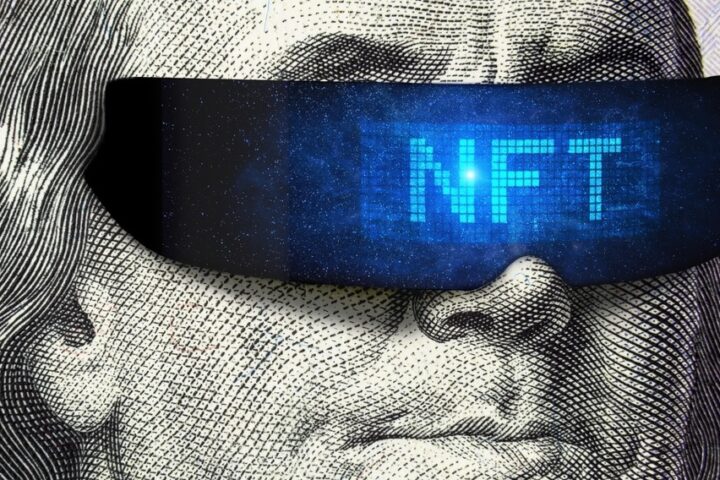In a fast-changing, global economic environment, non-fungible tokens (NFTs), backed by blockchain technology, emerged to disrupt how our world creates, perceives, and transfers value.
Features such as transparency, improved liquidity of assets, transactions traceability, and proof of ownership are of paramount importance across industries in today’s market.
All the above contributed to the rapid development of NFTs during the last months.
The rise of Blockchain
Understanding NFTs can only arise by considering the series of technological advancements over recent years.
In 2008, Satoshi Nakamoto introduced the idea of Bitcoin, a peer to peer network that facilitates transactions in a digital environment.
The solution proposed involved the development of a decentralised network of trust between unknown to each other market participants, using cryptographic algorithms.
Trust between transacting parties allows the flawless exchange of value, limiting the risk for both the sender and the receiver.
In a conventional market, trust is established between participants through the use of centralised intermediaries which facilitate transactions.
However, Satoshi’s paper created a different dimension of trust governed only by mathematical principles, eliminating the middle parties acting as agents and overcoming the inherent risks and limitations faced by centralisation, including time delays, cybersecurity risks, and loss through custodian error or poor performance.
In 2008 little was known of what was about to follow.
Although Bitcoin’s growth was shaded by scepticism regarding the scalability and sustainability of the technology, it dragged the attention of several investors and software developers.
Another important milestone was the development of smart contracts enabling blockchains.
This allowed the programmability of transactions, and it meant that the idea of decentralised trust expanded beyond the exchange of cryptocurrencies or money to more complicated digital trades.
What are NFTs
NFTs are unique tokens issued or minted on a blockchain platform.
Their non-fungible nature arises from the fact that they represent the ownership of an underlying object, digital or physical.
Each token transaction, including minting, is traceable, proving the origin and ownership of tokens immutable. Data cannot be altered to cause discrepancy and exchangeability in a digital world with improved transaction time.
This creates a world where anything of value can be represented in the form of tokens which can be easily sold to other market participants in the exchange of fiat money, goods or other tokens.
Hence, upon the broader adoption of Blockchain backed NFTs, significant disruption is expected across several industries and markets.
Indeed, taking a closer look at the potential applications of NFTs, one can appreciate the wide spectrum of benefits offered by the technology that is applicable in today’s economy.
Music and digital art
The most apparent application of NFT technology in recent years has been the representation of digital art ownership.
Artists, minting creations on Blockchain, can directly access a broad market without the need of intermediaries.
Automation ensures that original creators are compensated fairly by allowing features such as access to gains from future sales.
Physical assets ownership
Ownership of physical assets in the form of land, buildings or equipment, jewellery etc., can also be represented using NFTs.
Title deeds or ownership certificates can be replaced with a digital token that cannot be forged or destroyed.
This allows market participants to exchange legal ownership of assets effectively and efficiently while improving the liquidity of the assets.
Education and research
The immutability offered by blockchain technology allows third parties to directly verify the authenticity of educational accreditations or certificates, improving transparency.
Literary property can be protected through NFTs, improving the value of research activity.
Gaming
The introduction of blockchain technology in gaming is expected to face exponential growth in the coming years.
Exchange of achievements and collectable gaming items through an in-game marketplace can expand using the interoperable features of Blockchain to trade between different gaming platforms and applications.
Collectables
Collectors can verify and prove the scarcity of their items through the immutable and transparent blockchain ledger using NFTs.
At the same time, the value of collectables is readily available to potential buyers if those are traded within a public blockchain environment.
The future
While the NFT industry has significantly expanded and evolved rapidly over the past months, there is still a large area for exploration and exploitation, especially in industries and sectors that have not yet assessed and evaluated its potential and application.
The meteoric rise of the NFT market in 2021 concentrated in the collectable industry, mostly relating to digital artwork, dominated by sports highlights, GIF-animated artwork and other collectable items.
Nevertheless, new market segments emerged in the second half of the year. Moreover, with digital collectables still the main driver in NFT sales, the range of transactions has spread to other industries such as fashion, gaming assets and music, indicating the new directions of growth.
The embedded characteristics in the nature of non-fungible tokens can establish value for creators in both the private and public sectors.
NFTs are starting to develop and shape into a more concrete direction, in parallel with other regulatory and market changes expected to impact its evolution.
The future of NFTs is undoubtedly looking bright, taking centre stage, in line with the development of the metaverse, which is closely related to the application of NFTs.
The expansion and growth of the metaverse concept is also a driving force in the rise of NFTs as there will be an increased number of digital assets and online marketplaces for people to transact with.
Following these considerations and as we gradually advance into a multiverse, the virtual world is expected to become a significant part of our daily lives and its products, which could either be exclusively digital or virtual representations of physical assets; NFTs represent one of the most revolutionary innovations of the last decades.
By Charalambos Sergiou, Partner, Blockchain & Tax Advisory, Nikolas Stratis, Senior Associate, Blockchain Alexandros Vacanas, Senior Associate, Blockchain, PwC Cyprus










